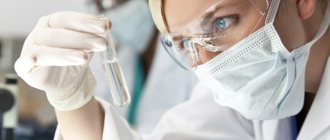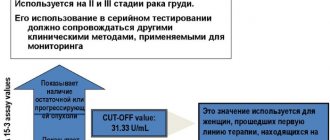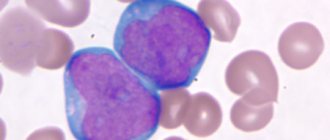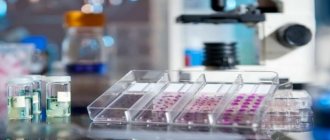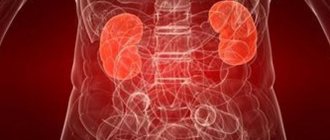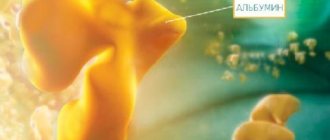Indications for donating biomaterial
Gonorrhea is a sexually transmitted disease. It is characterized by mucous and purulent discharge from the urethra or vagina, pain and discomfort during urination, and itching of the anus. The urethra, vagina, and cervix are especially often affected by the infectious and inflammatory process. The danger of gonorrhea lies in its often hidden course. Therefore, it can be detected when examining a patient for another disease. But more often, the severity of the clinic gradually increases as infectious pathogens spread through the organs of the genitourinary system.
A smear is taken for gonorrhea when the following symptoms appear:
- mucous discharge from the urethra in men and from the vagina in women;
- pain syndrome of varying severity during urination and for several minutes after it.
Biomaterial collection is performed if infertility caused by gonorrhea is suspected. It is also indicated for recent sexual intercourse without the protection of barrier contraceptives. In such cases, it is recommended to contact a state clinical laboratory for a free examination.
About gonorrhea
The affected area of gonococcal infection is the genitourinary system, the mucous membranes of organs at the site of contact with the gonococcus. In women, the cervix and urinary tract become inflamed, and in men, the bladder and urethra become inflamed. Depending on the point of entry of the infection, the mucous membranes of the oral cavity and anus may also be affected.
Interesting ! There are rare cases when the infection affects the mucous membrane of the eye.
The most common way of contracting gonococcal infection is through sexual intercourse with an infected person. Contact can occur by oral, anal or vaginal route. Sometimes pathogens are transmitted through linen, clothing, and personal hygiene items. Another method of transmission is through the birth canal from an infected mother to her child.
In men, the following signs of gonorrhea are observed:
- discharge of pus from the urethra;
- problems with urination (pain, frequent urge);
- cloudiness and traces of blood in the urine;
- burning in the genitals and urinary tract.
It is important to immediately visit a doctor if such signs appear, since a delay in treatment may result in the disease becoming chronic.
Women can often not suspect for a long time what has happened to them - the signs are smoothed out, often completely absent. They are sometimes confused with other common diseases of the genitourinary system: vaginal discharge is found, whitish or yellowish, and the lower abdomen hurts. Then problems with urination, itching, and bleeding appear.
To promptly determine the onset of the disease and begin treatment, a gonorrhea smear is performed - a reliable method for determining the presence of gonococci in the body.
In order for the analysis result to be as accurate as possible, you need to make careful preparation for the examination. Preparation is slightly different depending on whether the test is assigned to a man or a woman.
Preparatory stage
A smear test is quite informative, but its results can be unreliable without proper preparation. You won't have to make any adjustments to your diet. It is allowed to drink water immediately before the analysis, but regular, non-carbonated water. Alcohol of any strength is prohibited due to its weak disinfectant effect.
It is advisable to refrain from heavy physical activity, including sports training, the day before the delivery of the biomaterial. When testing may be delayed:
- the patient feels unwell - weakness, drowsiness, physical fatigue;
- increased body temperature, including due to an infection occurring in the body;
- exacerbation of any chronic pathology;
- surges in blood pressure.
The effect of pharmacological drugs can distort test results. They will be affected by taking antibiotics, glucocorticosteroids, immunomodulators, immunosuppressants, and cytostatics. If it is not possible to interrupt the course of treatment, then before taking a smear, you need to inform your doctor about this. When decoding the data, he will take into account that the subject is undergoing drug treatment.
Useful information: Before collecting a smear from the vagina or urethra, wash the genitals with warm water and soap and dry. It is necessary to use products without fragrances or antibacterial additives.
Doctors recommend avoiding sexual intercourse two days before the examination, not douching, and not using hygienic tampons, vaginal suppositories, creams and gels. The optimal time to submit material for gonorrhea is the first 3-5 days after the end of your period or before it starts. But if there is an urgent need, a smear can be taken from women at other times of the cycle.
How to get it
A smear for gonorrhea is a biological material taken from the patient not only from the genitals, but also from the rectum or oropharynx, and then applied in a thin layer to a glass slide. But in most cases it is taken from the vagina in women and from the urethra in men. As a rule, there is no discomfort during this procedure. It all depends on the qualifications of the doctor, the instruments used, and the intensity of the infectious and inflammatory process in the organs of the genitourinary system.
Among women
When collecting biomaterial, a special brush for scraping from mucous membranes or a sterile cotton swab is used. The doctor must first remove the mucous secretion, which will subsequently complicate the interpretation of microscopy results. Gonococci parasitize the cells of the body, so it scrapes from the genitals.
The technique for taking smears does not vary depending on the method of the upcoming study:
- the doctor, using a sterile spatula, takes biomaterial from the vagina, cervix and external urethral opening;
- The gynecologist distributes the biomaterial evenly with wide strokes onto sterile glass slides.
A smear for gonorrhea in women is taken with a thin brush from the mucous membranes of the cervical canal and cervix
Biological samples taken from different areas of the genitourinary system are applied to the glass separately. To avoid misinterpretation of SS data, they are marked by the doctor with generally accepted letter designations. U - urethra, V - vagina, C - surface of the cervix. After drying the samples at a certain temperature, they are sent to the laboratory for testing.
In men
Before starting the procedure, the penis is treated with an isotonic solution using a sterile swab. The algorithm for taking a smear for the presence of gonorrhea is as follows:
- the doctor carefully inserts a thin instrument into the urethra;
- he makes rotational movements to collect the maximum possible contents of the urethra;
- After a few minutes, the doctor removes the probe and treats the penis with an antiseptic solution.
The collected biomaterial is placed in a sterile container with a transport medium and sent to the laboratory for further research.
How are smears tested for gonococci?
In this section, we will take a closer look at how different types of biomaterial research are carried out.
Important! Gonococcus, which is located outside the human body, is unstable, so after taking the material, the study is carried out within 15 minutes.
Analysis using the Gram method, or bacterioscopy in other words, is performed, as we have already said, using the method of staining with special means. To identify Neisser gonococcus, the nurse examines the biomaterial under a microscope. Thanks to the bright coloring of gonococci, they are easy to see against a pink background. Bacterioscopy is good because the results can be found out almost immediately, but for women it is not entirely accurate - when taking material from the cervix, the gonorrhea may not be detected. Therefore, the absence of gonococci in a smear does not guarantee the absence of the disease itself.
In addition to bacterioscopy, our specialists use other types of tests to identify gonorrhea. The seeding of the material is among the most reliable. It is often used when other test results are negative and the doctor has doubts about their accuracy. The patient's biomaterial is placed in a special environment supplied with nutrients. Observation of the growth of the gonococcus colony is carried out for 5–7 days. If the colony increases, the diagnosis is confirmed.
The advantage of bacterial culture is that it not only guarantees the reliability of the data obtained with high accuracy, but also allows you to select the right antibiotics. The method makes it possible to identify the resistance of microorganisms to different types of drugs, which facilitates subsequent treatment.
How long to wait for results
How long does it take to test for the presence of gonococci? Everything depends only on the capacity of the laboratory and its workload. Sometimes the results are needed urgently by the attending physician, for example, before emergency surgery. In this case, he will receive all the necessary data after 2-2.5 hours. You usually have to wait one to seven days for results. This period is influenced by the method of studying the biomaterial.
Note: The waiting time for gonorrhea smear results will increase if, during the initial examination, the doctor additionally prescribed oncocytological examination and colposcopy.
Types of laboratory diagnostics
The most informative methods for diagnosing gonorrhea are microscopy, bacteriological culture on specific nutrient media to isolate a pure culture, and PCR examination. If sexually transmitted pathology is asymptomatic, then preference is given to cultural examination. It is also used to detect gonorrhea in children and pregnant women.
Microscopy
A smear from the urethra is used as a biological sample, onto which reflective dyes are applied in certain ways. If the material contains at least one gonococcus, then when the illuminating devices are pointed at, it will glow in a certain range. This diagnostic method is called direct immunofluorescence. The examination helps to determine the presence of infectious agents in a biological sample within an hour. Microscopy is used to make an initial diagnosis; subsequently, additional molecular or serological studies may be required.
Studying a smear using microscopy helps to identify the causative agents of gonorrhea with fairly high accuracy.
Survey microscopy of smears for gonorrhea in men and women allows not only to identify infectious pathogens, but also to assess the severity of the disease. After staining the biomaterial applied in a thin layer on a glass slide and examining it under a microscope, other microorganisms are often found, that is, a mixed infection is diagnosed. And an increased level of leukocytes and epithelial cells indicates the development of an inflammatory process.
Bacteriological culture
Culture is considered the most informative (sensitivity is about 95%) method of diagnosing gonorrhea. This culture test extremely rarely gives false results, so even at the initial stage of a sexually transmitted infection it helps to detect gonococci. The disadvantages of microbiological analysis are the high cost of culture media and the long waiting time for results - about a week.
Interpretation of pelvic ultrasound in women, normal
Biological material - epithelial cells taken from the genitals by scraping. They are added to a Petri dish filled with a nutrient medium, which is necessary for the growth and active reproduction of gonococci. It is necessary to create favorable conditions for the formation of pathogen colonies. To do this, the cup is placed in a special incubator with a thermostat. After a few days, colonies of gonococci form on the surface of the nutrient medium.
Laboratory specialists judge the degree of the infectious-inflammatory process by their qualitative and quantitative characteristics:
- coloring;
- location;
- quantity.
The more colonies formed, the higher the number of gonococci on the inner walls of the genital organs. Will culture show pathogen resistance to antibiotics? Yes, its results are important for drawing up a competent therapeutic regimen. After all, various uroseptics, antibacterial and antimicrobial agents are often used to treat sexual partners.
PRC diagnostics
The most sensitive method for diagnosing gonorrhea is the polymerase chain reaction (PCR). The study reveals the DNA of pathogenic microorganisms, which allows us to judge with 100% confidence the presence or absence of an infectious-inflammatory process in the genitourinary system. At all stages of the PRC study, sterility is required, otherwise the test results will be false.
Polymerase chain reaction is a modern method of molecular biology that allows you to increase the number of DNA fragments in a smear. It has many advantages:
- results are known within 2-3 hours;
- minimal preparation of smears is required;
- sensitivity is 97-98%, and specificity reaches 100%;
- allows you to establish a diagnosis based on the fact of detection of gonococci and track the dynamics of the process based on the concentration of pathogens (quantitative analysis).
The most informative smear test for gonorrhea is the polymerase chain reaction method
After cloning, a biological substrate with numerous DNA of gonorrhea pathogens is obtained. It is placed in the wells of laboratory glassware with agarose gel. Then connect the analyzer to a power source to perform electrophoresis. Under the influence of weak pulses of electric current, the nucleic acids are separated. Now they can be easily viewed in the transilluminator.
Express systems
Pharmacies sell rapid tests that can help you determine if you are infected with gonorrhea at home. Biomaterial for home diagnostics - purulent discharge from the urethra, vagina or rectum. It is taken independently in compliance with the rules of asepsis. The operating principle of the test is based on a reaction with specific antibodies to gonococci. The reaction that has occurred is assessed by the coloring of one (control) strip (negative) or two (positive).
Important: The main advantage of a smear test using a rapid test is anonymity and no need to visit a medical facility. The downside is the extremely low sensitivity (less than 50%).
Treatment
The earlier the disease is detected, the easier it will be to treat gonorrhea. Advanced or chronic gonorrhea is difficult to treat. Also, you cannot interrupt the prescribed therapeutic complex, since this disease is dangerous due to complex relapses.
Gonorrhea does not go away on its own. Sometimes it is enough to take pills for gonorrhea to get rid of a severe disease and dangerous consequences. Gonococcus that has entered the body cannot be destroyed only by the body's immune system. Lost time and refusal of treatment provokes serious consequences of gonorrhea, which destroy reproductive functions and sometimes threaten life itself.
Doctor treating gonorrhea
Diagnosis and treatment of gonorrhea is carried out by venereologists and dermatologists. It is these specialists that should be contacted when characteristic symptoms appear. In the early stages, treating gonorrhea is not difficult. Sometimes it is enough to take antibiotics for gonorrhea to get rid of the pathology. Treatment of gonorrhea is carried out at home, but with strict adherence to all recommendations of the attending physician. Otherwise, serious consequences are possible.
The attending physician may insist on hospitalization at his own discretion. This is due to the fact that the patient may live in unfavorable conditions and there are doubts about his compliance with all the doctor’s recommendations.
Antibiotics used in the treatment of gonorrhea
If the disease is detected in a timely manner, it is sometimes enough to take antibiotics for gonorrhea to get rid of severe pathology. Treatment and its success depend on the severity of the disease. In most cases, these are drugs containing:
- penicillin;
- azithromycin for gonorrhea;
- macrolides;
- eoithromycin.
Self-medication is strictly prohibited to avoid serious consequences. Each drug is prescribed only by the attending physician!
Immunotherapy
After treatment, it is important to take measures to improve the functioning of the immune system. To do this, the patient is given a special vaccine that contains inactive forms of gonococci. They provoke the active production of antibodies by the body. Such prevention of gonorrhea is important for patients who have brought this disease. The drug is administered intramuscularly with a break of several days. It will take no more than 8 stakes to protect the body and prevent relapse.
Decoding the results
Decoding the results of bacterial culture is quite simple. The form issued to the patient indicates whether gonococci or gram-negative diplococci were detected or not. These terms in medical practice refer to the causative agents of gonorrhea. In conclusion, there is also information about the number of pathogenic microorganisms, the degree of purity of the smear, and, consequently, about the severity of the infectious process occurring in the genitourinary system. It also contains data on the sensitivity of gonococci to antibiotics of certain clinical and pharmacological groups.
Components that may be contained in a urethral smear:
| Components of a smear for gonorrhea | Norm |
| Leukocytes | Up to 5 |
| Epithelial cells 5-10 | 5-10 |
| Slime | In moderation |
| Cocci | Single |
| Gonococci | None |
PCR allows you to simultaneously detect both gonorrhea and other pathogens in the test material. Deciphering a polymerase chain reaction analysis does not take much time. If at least one fragment of gonococcal DNA is detected, a diagnosis is made.
Gonorrhea is diagnosed by microscopy when diplococci are detected in the biomaterial, which have three characteristic features:
- outwardly resemble coffee beans, concave sides linked to each other;
- infectious pathogens are found in the biomaterial in free form and inside leukocytes, macrophages, and epithelial cells;
- In microscopy of smears stained with Gram methylene blue, gonococci are identified by their red color.
If, upon deciphering, it turns out that gonococci are located only outside the cells, then it is necessary to confirm their species by other methods.
Useful tips
Tip #1
It makes sense to take a smear test for gonorrhea and other sexually transmitted infections once a year if you have a regular partner, and every time after unprotected sex with a casual partner.
Tip #2
Sometimes bloody discharge occurs after a smear test. If they do not stop within several hours, then you should immediately contact a specialist.
Tip #3
A repeat analysis for the presence of gonorrhea pathogens is carried out in the same medical institution where the first study was performed, since the average value of a specific indicator, which is obtained during a mass examination of a healthy population, may vary among clinics. And this will cause a false interpretation of the data obtained.
Features of testing in virgins
In girls and adolescent girls, when the hymen is not broken, the material is collected in a similar way, but speculums are not used during the analysis. The smear is taken carefully directly through the hymen, as a result of which it is not damaged. It is also possible to collect material through the anus from the rectum or from the urethral mucosa.
Important ! This procedure does not cause pain or traumatic damage to the hymen, so the study can be carried out even in children.
If the culture results for gonococci do not contain traces of bacteriological contamination, this cannot always be considered a reliable result, especially when a negative test is accompanied by corresponding symptoms. There are external factors that can influence the analysis and lead to false negative results. When inflammation is detected by obvious symptoms, but the source is not revealed by a smear, additional diagnostic procedures are performed - bacteriological culture, PCR.
